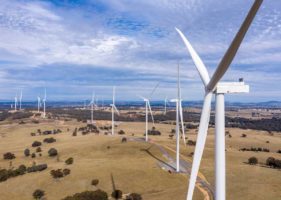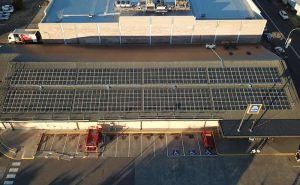A Queensland coal mine will be able to more than double its greenhouse gas emissions without the prospect of penalties, thanks to a decision made by the former Coalition government just months before the federal election.
Earlier this year, multinational mining giant Anglo American successfully applied to have a Safeguard Mechanism ‘baseline’ – which operates as a theoretical emissions ‘cap’ – imposed on the Grosvenor coal mine to be lifted by almost 135 per cent.
Data published by the regulator shows the Grosvenor coal mine was issued an initial annual emissions baseline of 1.39 million tonnes in 2016. But the Clean Energy Regulator, which administers the Safeguard Mechanism, agreed to increase the coal mine’s emissions cap to 3.31 million tonnes per year.
The data shows the baseline was updated in March this year – just weeks after the mine was given clearance to re-start operations after mining was halted when an explosion injured workers.
The Australian Conservation Foundation’s climate campaigner, Suzanne Harter, says the ability for a coal mine to more than double its emissions without penalty underscores just how weak the Safeguard Mechanism had been designed by the former Coalition government.
“Anglo American has been able to double its emissions allowance without facing any penalties,” Harter said.
“Under the Coalition-era settings the safeguard mechanism was absolutely useless as a tool to cut climate pollution.”
The baselines are already well-beyond the amount of greenhouse emissions that Anglo American said it expected the mine to produce when it sought development approvals, having estimated in the mines Environmental Impact Statement that the mine would produce less than 550,000 tonnes of annual emissions.
Anglo American told the Clean Energy Regulator that the company had implemented measures made up of ‘three pillars’ following the increase to its emissions cap, which includes setting company wide emissions targets, increasing the mine’s gas flaring infrastructure to destroy waste methane and a commitment to “undertaking pilot studies to mitigate emissions” from the mine.
Methane gas is a common by-product from the mining of coal, with the potent greenhouse gas escaping from coal as it is removed from a deposit. The Grosvenor coal mine produces metallurgical coal from deposits located near Moranbah, with the deposits known for having a high waste methane gas content.
When it was originally established by the former Abbott government, the Safeguard Mechanism was pitched as a means of keeping a cap on Australia’s greenhouse gas emissions and to prevent emissions reductions being purchased by the Emissions Reduction Fund being undermined by growing industrial emissions.
Harter said the Grosvenor coal mine was just the latest in a string of fossil fuel projects and major industrial emitters that had been successful in getting their emissions caps softened.
“ACF has documented numerous examples of companies being able to increase their pollution allowances under the safeguard mechanism with no consequences whatsoever,” Harter said.
“Some of the worst offenders emitted 20 times more than estimated.”
Compounding the substantial increases in the Grosvenor coal mine’s emissions limits; the coal mine hosts a project being awarded Australian Carbon Credit Units – a form of carbon offsets – for destroying methane gas extracted from the coal mine.
That project, the ‘Grosvenor 2 Waste Coal Mine Gas Power Station Project’ has so far been awarded around 290,000 tonnes worth of carbon offset credits, despite its expected increase in emissions.
“It is concerning that taxpayer money is being spent on abatement that is being far outstripped by excess emissions at Grosvenor. It is clear from the new baseline that there is no intention to rein in emissions at the mine and the abatement is miniscule compared to the increase in emissions,” Harter said.
The new Albanese government has committed to reviewing and strengthening the Safeguard Mechanism, and is expected to drive a significant proportion of the emissions reductions needed to meet its 43 per cent emissions reduction target for 2030.
Harter said it was important that any proposed reforms being considered by the Albanese government ensured the Safeguard Mechanism actually imposed meaningful limits on emissions.
“It will be important for Minister Bowen to move quickly to give teeth to the safeguard mechanism so Australia can get on top of the emissions problems we’ve got in the mining sector,” Harter said.










